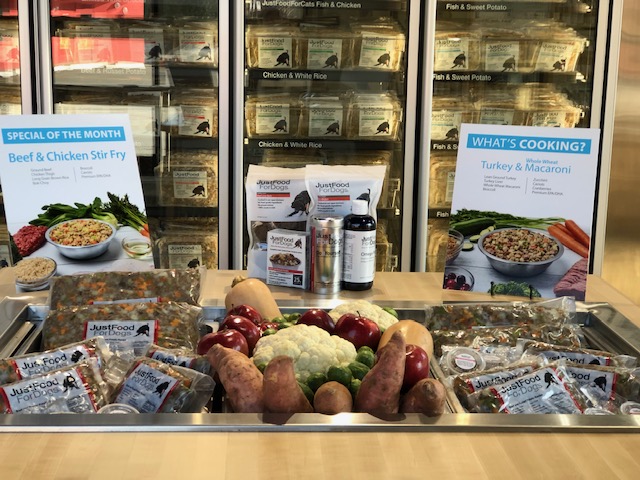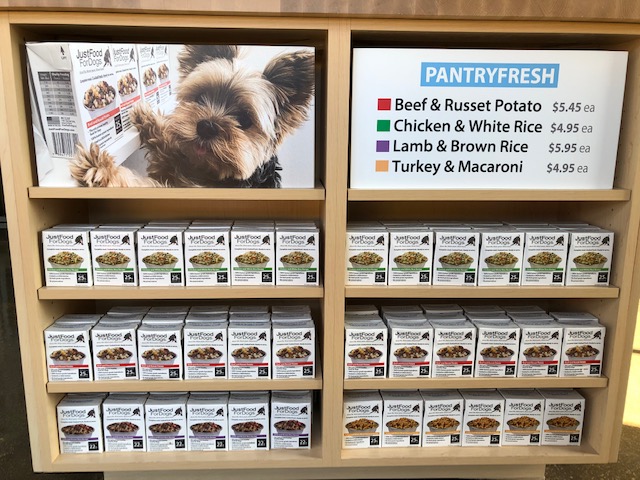How to punch above your weight and win
When shopping the aisles of a pet food store you’ve likely noticed an amazing array of new brand players on one hand, and on the other difficulty distinguishing anything truly unique between the options. Blurry at best as the protein percentage wars rage everywhere around you.
Pet care is a robust and growing business that works to float all brand boats. For now at least.
- More pet-owning households than ever
- More adoptions from rescue centers
- More puppies and kittens at home
- More mouths to feed
Even in the midst of a pandemic and economic recession the growth record is notably positive.
That said what happens when you reach a competitive tipping point as the number of brands multiplies (supply) while vying for a piece of the current volume and dollar pie (demand)? Right there, strategic best practices highly recommend nurturing true brand differentiation in the eyes of the consumer. When differences are marginal though, then what?
Read on…
This challenge gets to the heart of pet care brand conditions, a business personified by its Low Differentiation and High Durability traits among category participants. This is a healthy business ripe for disruption – when the right moves are made.
Understanding pet brand category behaviors
How is it that so many pet brands are holding firm right now?
The size of the pie is expanding. Brands that are similar to each other while exhibiting staying power are all playing by familiar rules – at least until an innovator comes along and changes the playbook.
A landscape of comparable brands with parallel nutritional claims and ingredient stories, arguing for advantage in the margins, is a living example of:
- A study in brand incrementalism
- Marginally better quality to the winners in each segment
- Pricing that stays in the segment frame, forcing choice on other more subjective cues
- A curious tit-for-tat marketplace where brands monitor and react quickly to copy competitor moves (ancient grains anyone?)
- Where staying in the competition is more important than distinguishing the brand as a unique star player
Premium kibble is kibble for the most part, although every brand understandably claims to be nutritionally superior to their equivalent price-point neighbor. That said, the language used to convey better or best bears remarkable sameness brand to brand.
Looking for marketplace advantage
When you work hard to create and earn high buyer value, the end result makes competition increasingly irrelevant. Where the pet business is generally a ground game of less differentiated brands, the sweet spot of disrupting category conventions is secured by moving from lower to higher differentiation.
Achieving greater uniqueness can happen when focused sharply on a marketplace buyer segment – a specific type of customer, where the brand strives to be hyper relevant and meaningful to a lifestyle cohort. Take for instance the consumer pursuing a health and wellness lifestyle, where the importance placed on the quality of what you eat is directly related to their perceived quality of life.
Inevitably, this consumer will transfer that same viewpoint to their pet food choices. While one could say wellness is the province of raw food brands, even there, the word raw has been democratized throughout the category in slightly de-tuned versions such as freeze-dried toppers, chunks and kibble inclusions.
Channel as a disruptive idea
Just Food For Dogs (JFFD) based in Irvine, CA has found a way to re-think the path to market.
Their model involves free-standing retail kitchens that make fresh pet food on premise, a concept optimized for higher income zip codes where the cost per pound is less important to the perceived nutritional upgrade in a freshly-prepared diet. The opportunities for customization to specific pet needs is remarkable and embedded in this concept.
Company President Carey Tischler explained this is the beginning of a national expansion: “our kitchens are an incredibly effective means of showing, not just telling, pet parents how we are different – and how fresh, whole-food can change their pets’ lives. With nine open-to-the-public kitchens serving pet parents today, and several more kitchens under consideration for 2021, our national expansion is already well underway,” he said.

Their Chicago kitchen entry now under construction sits cheek-to-jowl with the city’s largest, most progressive and well-known pet rescue The PAWS Foundation – a virtual mini-industry in moving abandoned or stray pets to new homes. Ahem, that’s new food-seeking pet owners. Across the street is Petco, a retailer that is stocking a shelf-stable packaged version of Just Foods For Dogs pet food.
Is JFFD a retail pet food kitchen company with an aligned packaged business to serve consumers where no retail kitchen exists? Or a packaged pet foods company with a unique retail kitchen extension that serves as marketplace theater and demonstration of their fresh food ethos?

“We view our business as a direct-to-consumer ecosystem,” Tischler reports, “and manage it as such – with each channel supported by our Certified Nutrition Consultants. The kitchens are a critical part of the business model, but they work in concert with our pantries (store-in-store concept) and online offering. We have a lot of evidence these channels are synergistic and effectively support each other, driving brand awareness and offering convenience to pet parents.”

In response to pandemic impacts, Tischler says the company is leaning into curb-side pickup at their kitchen locations or home delivery through third-party providers.
What’s interesting about this approach is its relevance to a like-minded consumer who sees higher food quality as verified by the fresh ingredients and preparation techniques used to preserve nutritional density. The very same food preferences they apply to themselves can now be delivered to their pet in a Chipotle-like store setting. At the very least, it’s a disruptive idea.
- Of note, we think Just Food For Dogs has a significant opportunity to weigh in on transparency, ingredient sourcing and food standards to further enhance their nutritional credibility story, although we haven’t seen that manifest as yet. Transparency is a unique point of competitive advantage in an industry where it’s largely a missed opportunity.
Just Food For Dogs is a marvelous study in innovation around a category governed mostly by conventional extruded solutions.
In mainstream retail FreshPet presents an interesting twist on packaged products and certainly deserves the growth they’ve experienced. However, we believe even more can be done to separate and elevate brands above the forest of sameness. Differentiation operates to attract a cohort of engaged, enthusiastic fans who have a deeper, emotional connection to the brand that is stronger, frankly, than a reason to buy focused on protein percentages.
Zig when everyone else zags
In the last seven months the pandemic has served as the most important personal priority- shifting mechanism of the last 30 years, advancing the importance of health and wellness to sheer survival. Taking care of your immune system is now a clarion example of how consumers reassert some control over their lives in an uncontrollable societal and environmental setting.
We’ve characterized this as Health is the New Wealth. Yet this development has not translated fully to pet food.
Pet lifestyle is a real thing. We believe there are ample numbers of households that operate daily around the pet-to-parent dynamic. A consumer insight-savvy brand could embrace a lifestyle platform that rises over the ubiquitous discussion of human-grade proteins and fresh vegetables ingredient trope. It would be a ‘zig’ to emerge above the endless chatter about real meat, chicken or fish and tag the emotional equation of what higher quality pet food is intended to do: The quality of the food provided is the ultimate expression of love for furry family members.
Addressing and leveraging consumer lifestyle affords a much deeper conversation on topics more relevant and resonant to the pet food buyer than food science and dietary claims. It’s also inherently an emotional construct, key to engagement and message impact.
Pandemic and purpose-based brand building
COVID-19 has operated to refocus people on their beliefs, purpose and societal values that contribute tangibly to the greater good. These considerations are influencing brand preference and purchase. Up to this point organic ingredients haven’t been widely employed outside of a handful of pet brands. The word sustainability continues in some respects as a form of check-the-box afterthought invoked like a Whole30 label certification.
Organic is really about farming methods more friendly to the environment and less damaging to our climate. Sustainability, likewise, can be viewed optically as regenerative agriculture practices that if widely adopted could help turn farmland into the world’s largest carbon sink.
These ideas can be repackaged as a move to address carbon footprint, playing a decisive role in managing the existential threat of climate change on our future wellbeing. Could this become an embedded mission for a pet food brand? We think so. Pet food is a very big user of feedlot meat and agricultural ingredients that in a larger sense of their production are among the biggest contributors to greenhouse gas on the planet.
- Carbon footprint is starting to show up now on select human food labels. We believe this is the start of a major trend. It will be interesting to see how it translates in pet food marketing.
Whether it’s channel and business model differentiation, a switch to lifestyle marketing and communication, or embracing a mission around climate change, each of these ideas represents a potential new tool in the standard go-to-market toolbox. Concepts that were popularized in recent years by premiumization of the pet food business and the dawn of popular grain-free formulation claims.
The latter became a herd-like move. We observed most premium brands quickly shifting to emphasize the ancestral diet blueprint.
- Yet this becomes the very reason to consider a strategic move towards greater differentiation not less. If supporting high buyer value – moving past common ingredient stories – makes your competition less relevant wouldn’t you seriously consider it?
We know this is hard. It feels risky. It sounds like bucking category norms. Will the consumer react well to it? Of note, consumer interest is a testable proposition. In what is mostly a sea of sameness, clear observable brand distinction can be a highly prized and leverageable asset.
If exploring new thinking and fresh ideas sounds like a good conversation to have, we welcome the opportunity to think with you. Use this link to open what could be a very interesting and rewarding conversation.
Looking for more food for thought? Subscribe to the Emerging Trends Report.
Bob Wheatley is the CEO of Chicago-based Emergent, The Healthy Living Agency. Traditional brand marketing often sidesteps more human qualities that can help consumers form an emotional bond. Yet brands yearn for authentic engagement, trust and a lasting relationship with their customers. Emergent helps brands erase ineffective self-promotion and replace it with clarity, honesty and deeper meaning in their customer relationships and communication. For more information, contact Bob@Emergent-Comm.com and follow on Twitter @BobWheatley.
